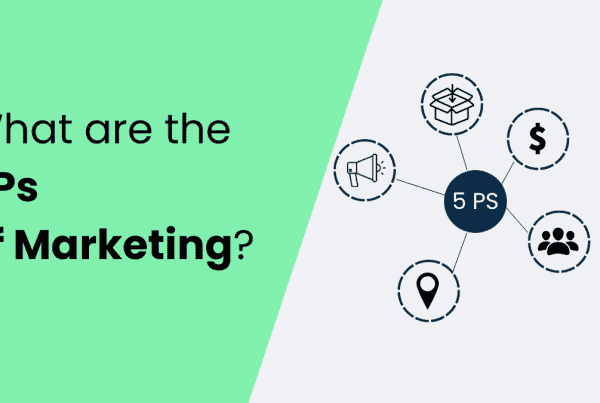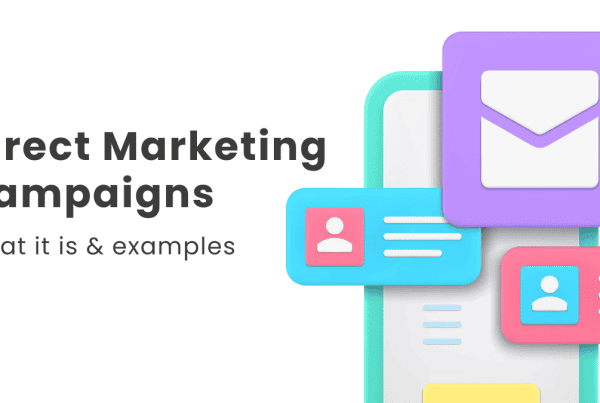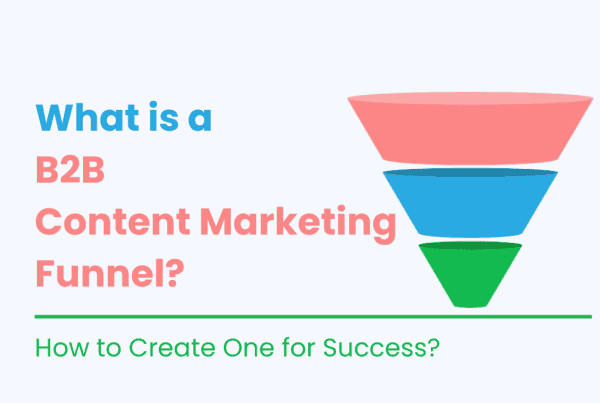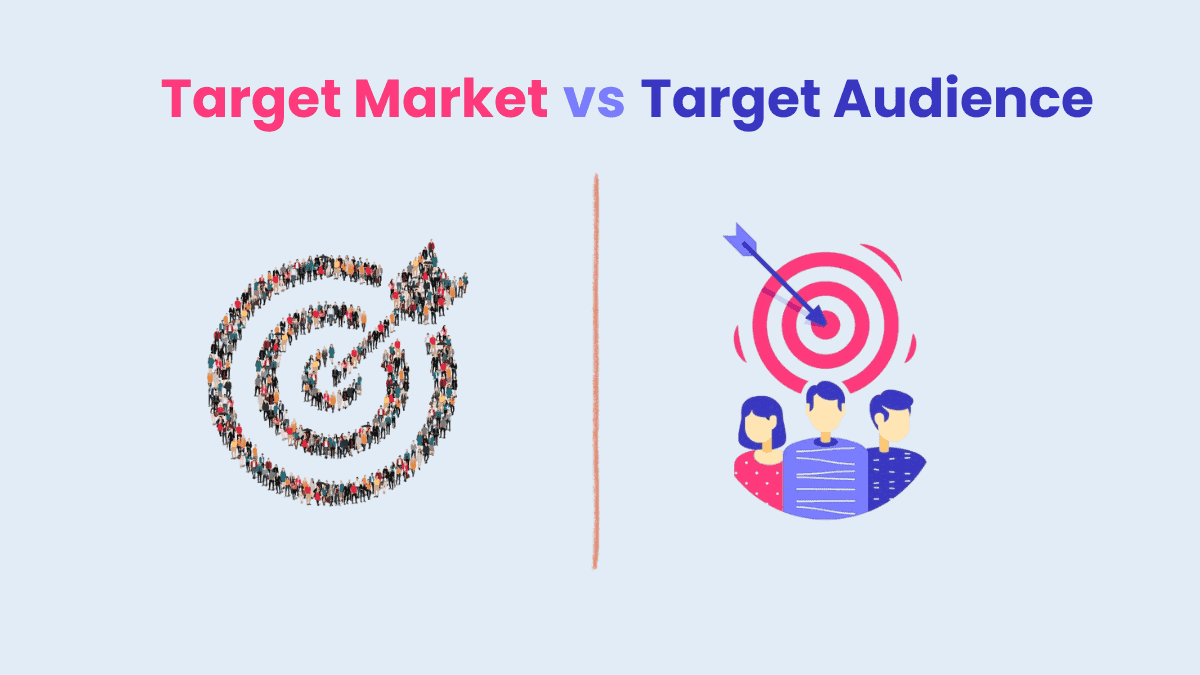
Starting out in digital marketing can feel confusing with all the buzzwords thrown around. Words like customer persona, ideal customer profile, target market, and target audience might seem like terms from another world, but they’re not, you just have to understand them to hit the bull’s eye.
Here’s the thing: knowing the difference between your target market and target audience is key to creating successful marketing campaigns. Without this clarity, your efforts might completely miss the point.
So, what do these terms mean, and why are they important? In this post, we’ll explain them in the simplest way possible. By the end, you’ll understand the key differences and how they fit into a solid marketing strategy. Let’s get started!
What is a Target Market?
A target market is the larger group of people you want to sell your products or services to. These are the people you believe are most likely to look for, buy, and use what your brand offers. They usually have things in common, like their age, income, location, or hobbies. For example, a company selling workout clothes might target fitness enthusiasts, whether they’re beginners or seasoned athletes.
Think of your target market as the big-picture group that could benefit from your product or service. It’s the first thing marketers consider when planning campaigns because it helps shape messages that appeal to this broad audience.
For example, a construction company specializing in commercial buildings in a large city might have a target market of everyone in the city, even though not all of them will need construction services.
Remember, a target market is a broad group. The people in it have some things in common, but it’s not very detailed. It’s just a starting point to guide your marketing later.
What is the Target Audience?
A target audience is a smaller, more specific group of people within your broader target market. These are the individuals you want to see your marketing messages, ads, and campaigns. They are like the audience most likely to be interested in your product or service.
For example, let’s say a brand is launching a new smartwatch. After researching their target market, they identified their target audience as fitness enthusiasts and working professionals aged 25 to 40 who want to build a healthier lifestyle.
By understanding who they want to reach, the company can create marketing campaigns that highlight features like activity tracking, a sleek design, long battery life, and sleep monitoring.
This specific focus helps them connect directly with the people who would find these features valuable.
An annual survey done by Hubspot on more than 1,200 marketers reveals that only 42% of marketers know basic details about their target audience, such as their age, gender, and location. 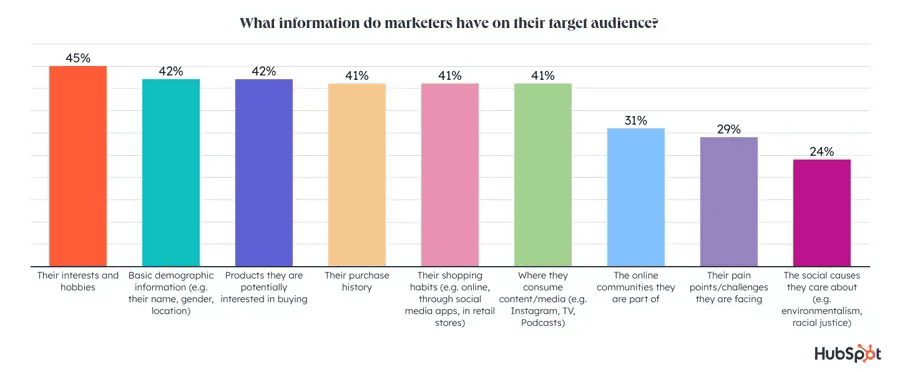
Defining a target audience is essential because it allows you to craft messages that speak directly to their needs, interests, and challenges.
Instead of trying to appeal to everyone, you can focus on what really matters to this smaller group. This approach makes your marketing efforts more effective and can lead to better results, like higher engagement and increased sales.
Target Market VS. Target Audience
Let’s understand the difference straightforwardly:
| Aspect | Target market | Target audience |
| Size | Broad and includes everyone you want to sell to | Smaller, specific groups within the target market |
| Purpose | Defines overall business strategy | Focuses on crafting specific marketing messages |
| Examples | Kids aged 4 to 6 for children’s books | Parents and grandparents who buy the books |
| Focus | General interest in the product | Higher likelihood of making a purchase |
| Use | Used to identify potential markets | Used for targeted campaigns and advertisements |
By understanding the difference, you can design strategies that effectively connect with the right people at the right time.
How to Identify a Target Market
Identifying your target market is one of the first and most important steps in building a successful business. Instead of guessing who might buy your products or services, you need to do proper research to understand exactly who they are. Here are four simple steps to help you identify your target market:
1. Understand your product or services
Start by looking at what you’re offering. What problems do your products or services solve? Who needs those solutions?
For example, if you’re selling eco-friendly packaging material, your product might appeal to environmentally conscious people and businesses aiming to reduce plastic waste. Understanding what you offer will give you a clear idea of who might be interested in it.
2. Do market research
Learn more about the people who might want your products or services by conducting market research. Use methods like surveys or online analytics to gather information about potential customers.
This research can help you figure out their age, location, shopping habits, and preferences. For example, if you’re running an electric two-wheeler business, you’d research what types of electric two-wheelers are most in demand, where they are in demand, and who needs them most.
3. Analyze your competitors
Take a close look at your competitors. Who are they selling to? What strategies are they using? This can give you valuable insights.
For example, if you’re a small sports shoe brand competing with big names like Nike, study their products, advertisements, and even customer reviews.
Understanding their strengths and weaknesses can help you position your brand better and find your unique space in the market.
4. Create a buyer persona
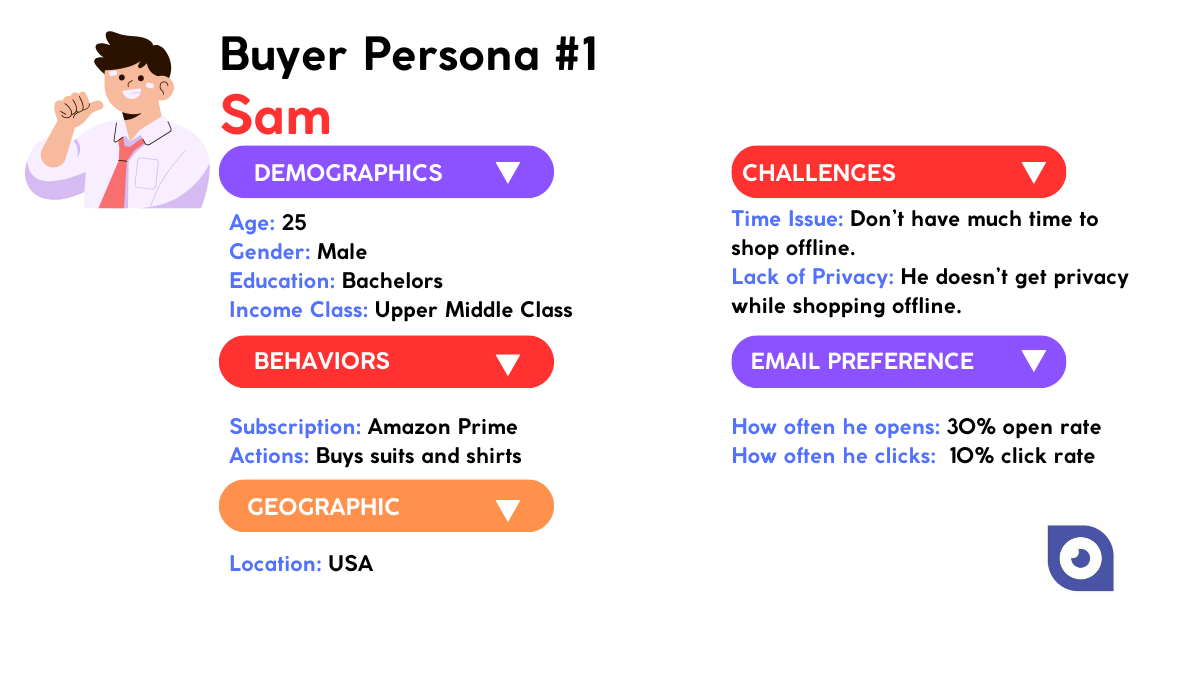 A buyer persona is like a profile of your ideal customer. It’s based on real research and includes details like age, gender, occupation, income, interests, and buying habits. Even though it’s fictional, it helps you understand your audience better and create marketing messages that connect with them.
A buyer persona is like a profile of your ideal customer. It’s based on real research and includes details like age, gender, occupation, income, interests, and buying habits. Even though it’s fictional, it helps you understand your audience better and create marketing messages that connect with them.
If you’re a fashion brand for Gen Z, your buyer persona might describe a 20-year-old college student who loves trendy outfits and shops online frequently.
By following these steps, you’ll have a clearer picture of your target market and be better equipped to create products and campaigns that truly resonate with them.
Why Should You Identify Your Target Market?
Knowing your target market is one of the most important parts of building a successful business. Without it, your marketing efforts can feel like throwing darts in the dark. By identifying your target market, you’ll know exactly who you’re speaking to and how to connect with them.
For example, if you sell men’s grooming combo kits, your target market is likely men aged 30 to 60 who are interested in grooming. You wouldn’t waste time marketing to groups that don’t need these products, like women or young teens. Instead, you can focus your energy and resources where they matter most.
Identifying your target market also shapes how you design your products, services, and marketing campaigns. It helps you understand your customers’ needs, how your offerings solve their problems, and what kind of messaging will resonate with them.
Additionally, it influences your business decisions, like where to advertise, what type of growth to aim for, and even how to improve your customer experience. When you’re clear about your target market, every decision becomes more focused and effective.
How to Identify a Target Audience
Figuring out your target audience means narrowing down a specific group of people from your broader target market who will most likely respond to your marketing efforts. Here’s a simple guide to help you identify your target audience effectively:
1. Analyze your current customer base
If your brand is new or you’re planning to launch a new brand, you can still learn about your potential customers. Think about who your product is for and what kind of people might like it.
For example, if you’re selling fitness gear, you could focus on young adults who enjoy staying active or trying new sports. You can also check out what similar brands are doing and who their customers are. This will help you get ideas and plan better for your business..
2. Segment your audience
Break down your broader market into smaller groups with shared characteristics. Here are a few ways to segment:
- Demographics: Age, gender, location, or education level.
- Psychographics: Interests, lifestyle, or personal goals.
- Behavioral traits: Shopping habits or brand loyalty.
- Socioeconomics: Income levels or occupations.
For instance, if you own a gym, you can segment by:
- Demographics: Young adults aged 18–35.
- Psychographics: People passionate about fitness and healthy living.
- Behavioral: Regular gym-goers who prefer group classes.
3. Research industry trends
Stay informed about your industry and the latest trends. Who is most excited about these changes?
For example, if you’re a tech brand launching a new gadget, your audience might include tech-savvy millennials who keep up with cutting-edge innovations. Understanding trends helps you stay relevant and tailor your messaging accordingly.
4. Create buyer personas
Build a detailed profile of your ideal customers. A buyer persona is like a fictional character based on real data about your audience. For example:
- Name: Fitness Fiona
- Age: 28
- Interest: Loves yoga and outdoor hikes
- Goal: Wants a gym with eco-friendly facilities and flexible classes
Personas guide your marketing strategies and ensure you’re speaking directly to your audience.
5. Monitor and adapt
Keep an eye on your audience’s preferences and feedback. Engage with them through reviews, social media interactions, or surveys.
For instance, if customers prefer video tutorials over blogs, you might focus more on creating video content. Adjusting your strategies to fit your audience’s needs keeps them interested and builds trust.
6. Test and refine
Launch small campaigns or pilot products to gather feedback. See what resonates with your audience and what doesn’t.
For example, if you’re introducing a new app, you could release a beta version and ask users for their input. This approach ensures your final product or campaign aligns with your audience’s expectations.
By following these steps, you’ll understand your target audience better and create campaigns that truly connect with them!
How Relevant is the Target Audience to Your Strategy?
Your target audience plays a crucial role in shaping your marketing strategy. Every decision you make, from where to promote your brand to how you craft your messages, depends on knowing who your audience is. Here’s why understanding your target audience is so important:
1. Choosing the right platforms
Different groups of people prefer different platforms. Knowing your target audience helps you focus on the places they hang out the most.
Again, If you’re marketing hair trimmers, younger men will be your target audience, and platforms like TikTok or Instagram might be your go-to choices. However, if your audience skews older, you might find Facebook more effective.
2. Tailoring your messaging
The tone, style, and content of your message should resonate with your audience. A campaign for first-time beard growers might focus on simple, beginner-friendly tips, while a campaign for experienced users could dive into advanced grooming techniques.
3. Choosing the right format
The format of your content also depends on your audience. Younger audiences might prefer short, snappy videos or fun social media posts, while older audiences might appreciate detailed blog articles or informative guides.
4. Boosting engagement
When your content feels relatable, your audience is more likely to engage. This means more clicks, shares, and conversions for your campaigns.
A gym targeting fitness enthusiasts might use motivational posts and interactive workout challenges to connect with its audience.
By understanding your target audience and incorporating their preferences into your strategy, you’ll not only save time and resources but also create campaigns that truly connect with the people you want to reach.
What is Market Segmentation?
Market segmentation is a way to break your larger target market into smaller, more specific groups of people. These groups are usually divided based on shared traits or behaviors, making it easier to create marketing strategies that feel more personalized and relevant.
For instance, imagine a company that wants to market its products to an entire university. Instead of treating the whole university as one group, the company can segment it into smaller groups, like students from different departments or faculty members. This allows the company to tailor its messaging to suit each group better.
Market segmentation often considers factors such as:
- Demographics: Age, gender, ethnicity, profession, or income level.
- Behavior: Shopping habits, preferences, or values, such as whether someone looks for discounts or makes impulsive purchases.
- Interests and habits: Things like hobbies, media consumption, and online activities.
By dividing the market in this way, businesses can understand their audience better and craft messages that truly resonate.
For example, if you’re selling sports shoes, you might create one campaign for professional athletes and another for casual runners. Each group has different needs and motivations, so personalized marketing works best. However, keep in mind that you can also use a multi-segment marketing strategy to target each and every segment of your target audience.
Using market segmentation, businesses can also analyze customer data more easily by focusing on smaller, more defined groups rather than a massive, diverse audience. This helps create strategies that save time, resources, and effort while boosting the effectiveness of marketing campaigns.
How to Reach a Target Audience VS. Target Market
Reaching your target market and target audience involves different strategies, but both are essential for effective marketing. Here’s how you can connect with each group:
How to reach your target market?
Your target market is the broad group of people who might be interested in your products or services. To reach them:
Step 1: Conduct thorough market research Understand the demographics, preferences, and behaviors of your potential customers. For example, if you sell eco-friendly water bottles, your target market might include environmentally-conscious individuals aged 18–45.
Step 2: Segment the market Divide your market into smaller groups based on factors like age, income, or lifestyle. For instance, you might target college students, working professionals, and athletes differently.
Step 3: Implement broader campaigns Use channels like TV, radio, and social media to create campaigns that reach a wide audience. These campaigns should highlight the overall benefits of your product or service.
Step 4: Focus on product positioning Showcase what makes your product unique and valuable to different segments of your target market. For example, emphasize affordability for students and durability for athletes.
How to reach your target audience?
Your target audience is a specific group within your target market. They’re the people you want to focus on for a particular campaign. Here’s how to connect with them:
Step 1: Use verified data Partner with people-based data providers to create audience groups based on real, accurate information. This ensures you’re targeting the right people.
Step 2: Create buyer personas Develop detailed profiles of your ideal audience, including their interests, challenges, and motivations. For example, a buyer persona for eco-friendly water bottles might be “Sarah, a 25-year-old college student passionate about sustainability.”
Step 3: Tailor your messaging Craft specific messages that speak directly to your audience’s needs. If targeting Sarah, highlight how the bottle reduces single-use plastics and fits her busy lifestyle.
Step 4: Leverage the right channels Use the platforms your audience prefers. Younger audiences might be on TikTok or Instagram, while professionals may prefer LinkedIn.
Step 5: Collaborate with influencers Work with influencers whose followers align with your target audience. For example, a fitness influencer could promote your water bottles to their health-conscious followers.
Bringing it together
Sometimes, your target market and target audience overlap. In these cases, you can create campaigns that appeal to both groups. For instance, a campaign for eco-friendly water bottles could combine general messaging about sustainability (for the target market) with specific benefits like portability (for a younger audience).
By understanding the differences and similarities between your target market and target audience, you can craft strategies that connect with the right people in the right way.
Wrapping it up
Understanding the difference between a target market and a target audience is essential for crafting successful marketing strategies. While they might seem similar, they serve distinct purposes. Your target market is the broader group of potential customers, while your target audience is a more specific segment within that group, often the focus of individual campaigns.
Defining and prioritizing both help you create personalized campaigns that truly connect with the right people. It’s the key to increasing sales, scaling your business, and unlocking new opportunities for growth.
Remember, a well-defined target market and a clear target audience can make all the difference in helping your business stand out in today’s competitive world. By focusing on these essentials, you’re setting yourself up for a strong foundation and long-term success.
FAQs
Is market segmentation the same as the target audience? No, market segmentation is about dividing a larger market into smaller groups based on criteria like age, interests, or behavior. A target audience is one specific group you choose from these segments to focus your marketing efforts on. Think of segmentation as organizing, and the target audience as picking the group to talk to.
Can a target market and target audience be different for different marketing campaigns? Yes, they can! A target market is a broad group of potential customers, while a target audience is a smaller, specific group within that market. Different campaigns may focus on different target audiences depending on factors like product variations, location, communication channels, or campaign goals.
What is the difference between primary and secondary target markets? A primary target market is the main group a company focuses on to sell its products or services, dedicating most resources to them. A secondary target market is smaller and less critical but still holds potential value. While the primary market drives sales and growth, the secondary market supports additional opportunities.


